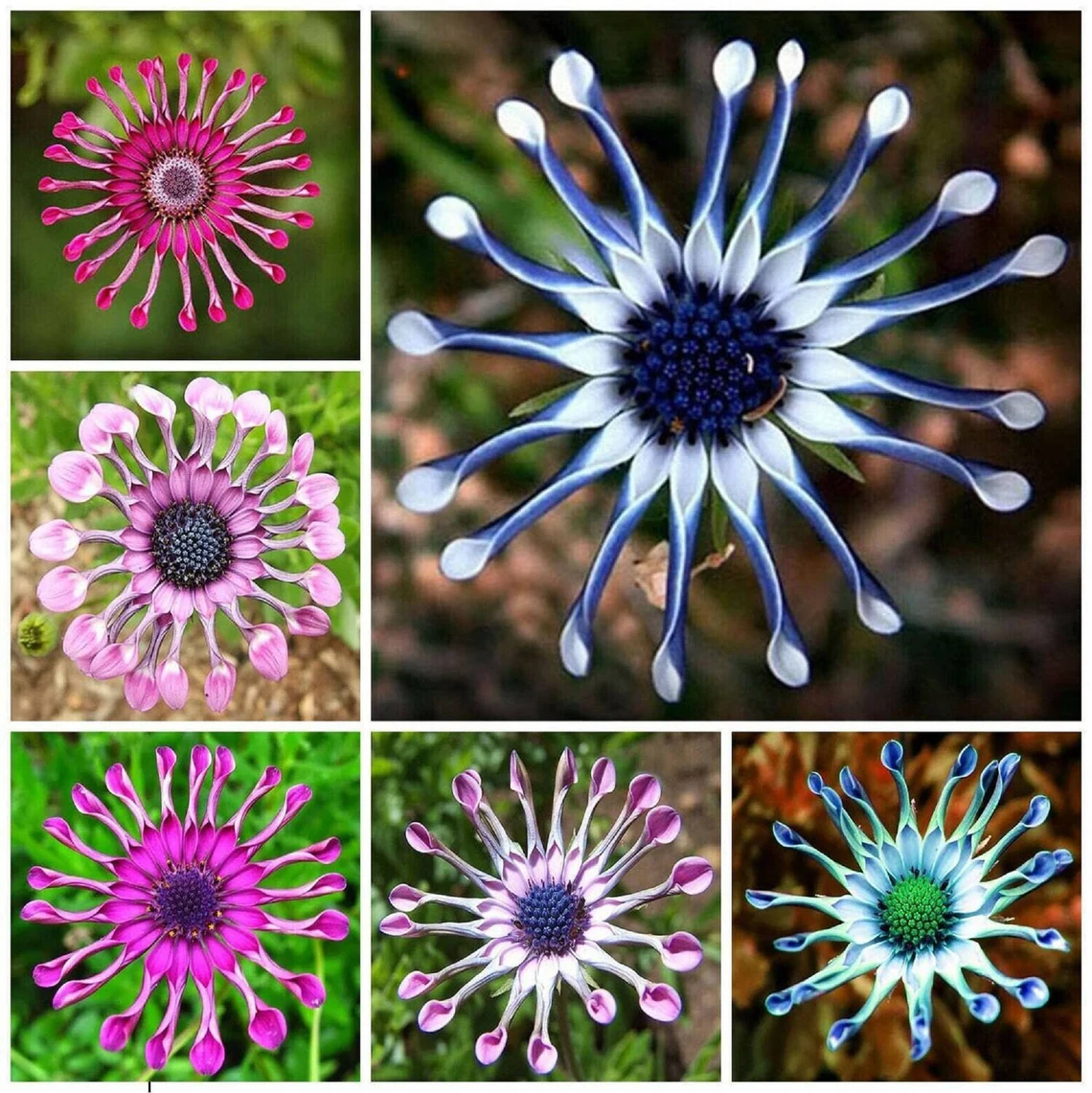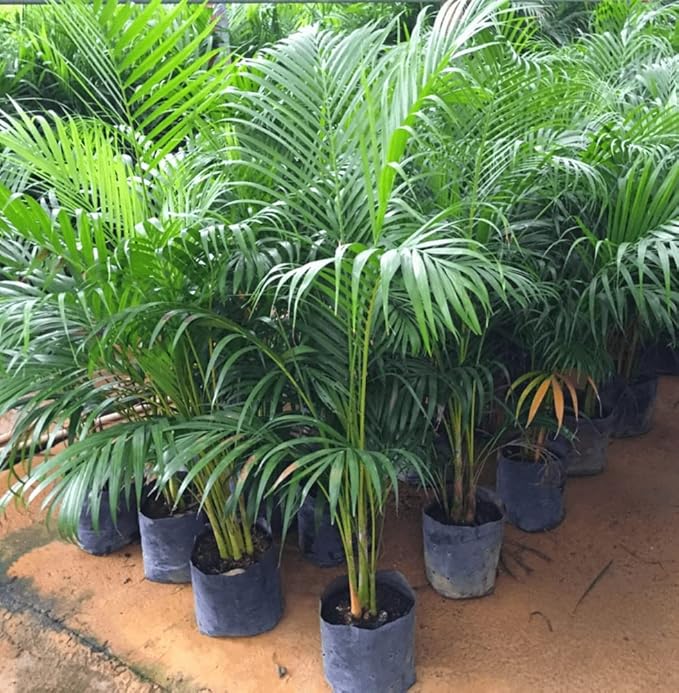🌱 Plants that Clean Pollutants
out of the Air
Plants that Detoxify the Air • Healthy Indoor Plants • Natural Air Purifiers

African Daisies - Natural Air Purifiers
📚 Page Contents
🔬 There is considerable scientific evidence of beneficial effects of plants in the interior environment
🚀 NASA Research Findings
Research by NASA and other organizations show that common house plants are powerful natural air cleaners.
87%
of indoor air pollutants removed within 24 hours
🌿 How Plants Work
Plants absorb pollutants through their leaves, roots and the bacteria that live on them. They then convert these substances to food.
💡 Natural Process: Plants literally eat the pollution and convert it into harmless compounds
💚 Major Health & Wellbeing Benefits of Interior Plants
Air Purification
Cleaning pollutants out of the air & absorption of harmful substances
Dust Filtration
Filtration of dust and dirt from the environment
Oxygen & Humidity
Producing oxygen and adding humidity to indoor environments
Sound Control
Dampening of sound levels in noisy environments
Natural Cooling
Cooling effect through natural evaporation
Visual Beauty
Enhancing the beauty of our homes and offices
Mental Wellbeing
Increasing positive feelings and reducing stress, anxiety, anger, and sadness
📏 Distribution of Plants for Optimal Effectiveness
📐 Optimal Plant Ratio
1 Plant
per 100 square feet
(2-3 plants per 10 square meters)
Standard ceiling: 22.6 cubic meters coverage per grouping
💡 Smart Placement Tips
- • Light flexibility: Not all plants need to be near windows
- • Darker corners: Many air-purifying plants thrive in low light
- • Avoid drafts: Balance light and ventilation for best results
- • Reduced effectiveness when plants are in direct air currents
☠️ Indoor Pollutants: Health Effects & Plant Solutions
Complete guide to toxic indoor pollutants, their health effects, common sources, and the specific plants that combat them
⚗️ Benzene - Known Carcinogen
🚨 Health Effects
- • Carcinogen
- • Skin and eye irritant
- • Headaches
- • Loss of appetite
- • Drowsiness, tiredness
🏭 Common Sources
- • Inks, oils, paints
- • Plastics, rubber, dyes
- • Detergents, gasoline
- • Tobacco smoke
- • Synthetic fibers
- • Pharmaceuticals
🌱 Plant Fighters
- • Dracaena Marginata
- • English Ivy
- • Janet Craig (fern)
- • Warneckel
- • Peace Lily*
- • Chrysanthemum**
- • Gerbera Daisy
🏠 Formaldehyde - Common Indoor Pollutant
😷 Health Effects
- • Irritated eyes, nose, throat
- • Headaches
- • Contact dermatitis
- • Respiratory issues
🏡 Household Sources
- • Room deodorizers
- • Carpets/carpet backing
- • Permanent press clothing
- • Foam insulation
- • Plywood, pressed wood
- • Plastic grocery bags
- • Paper towels, facial tissue
- • New furniture
- • Cigarette smoke
🌿 Powerful Plant Allies
- • Boston Fern
- • Aloe Vera
- • Rubber Plants
- • Date Palm
- • Bamboo Palm
- • Spider Plant
- • Golden Pothos
- • Snake Plant
- • Philodendron varieties
🧪 Trichloroethylene - Industrial Chemical
⚠️ Health Risk
Potential for liver damage with prolonged exposure
🏭 Sources
- • Dry cleaning chemicals
- • Printing inks
- • Paints, varnishes
- • Lacquers, adhesives
🌱 Effective Plants
- • Peace Lily*
- • Dracaena Janet Craig
- • Dracaena Warnecki
- • Dracaena Marginata
- • Chrysanthemum**
🧠 Xylene - Neurological Threat
🧠 Serious Health Effects
✏️ Art & Office Sources
- • Paints and varnishes
- • Printing industry
- • Rubber & leather industries
- • Pens, writing instruments
- • Drawing instruments
- • Bingo dabbers
- • Art supplies
🌴 Palm Specialists
- • Areca palm
- • Chrysalidocarpus Lutescens
- • Dwarf date palm
- • Phoenix roebelenii
- • Bamboo palm
- • Other palm varieties
**Important for Allergy Sufferers: If you are sensitive to pollen, avoid chrysanthemum and daisy arrangements as they are ragweed relatives.
Reference: Virginia.gov (adapted and expanded)
🏆 Most Effective All-Around Air Purifying Plants

Areca Palm - Top Air Purifier
🔬 Research-Proven Effectiveness
Research has shown that these plants are the most effective all-around in counteracting off-gassed chemicals and contributing to balanced internal humidity.
💡 Dual Action: These plants not only clean the air but also regulate humidity for optimal indoor comfort.
🌴 Palm Family Champions
- • Areca Palm
- • Dwarf Date Palm
- • Bamboo Palm
- • Lady Palm (Rhapis excelsa)
- • Reed Palm
🌿 Fern & Foliage Stars
🏠 Low-Maintenance Heroes
- • Peace Lily (Spathiphyllum)*
- • Rubber Plant (Ficus elastica)
- • Weeping Fig
- • Ficus Alii
Please Note: This is not a complete list, and there are no guarantees as to the accuracy of the information. Always research specific care requirements for your chosen plants.
🌱 Transform Your Air Quality Today!
NASA research proves these common houseplants can remove 87% of indoor air pollutants within 24 hours. Start with just one plant per 100 square feet and breathe easier immediately.
NASA-Proven Technology
Scientifically validated air purification you can trust
Multiple Health Benefits
Clean air, better humidity, reduced stress, natural beauty
Easy Implementation
Just 1 plant per 100 sq ft - many thrive in low light